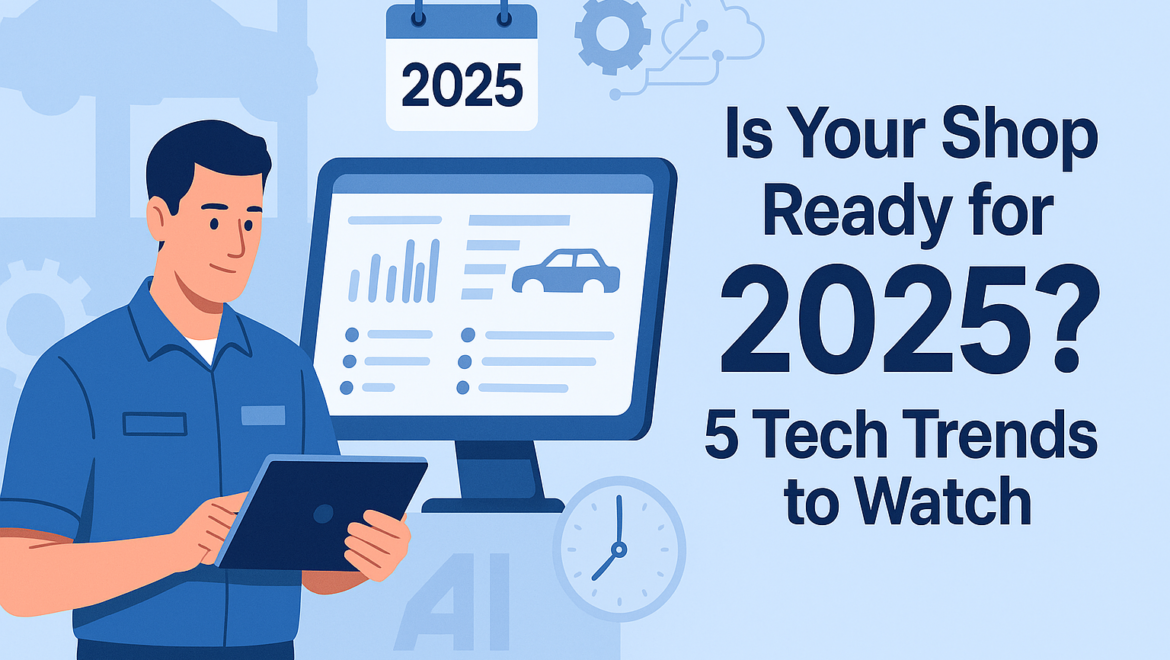Let’s face it—running an auto repair shop in 2025 won’t be anything like it was five years ago. If you’re still relying on clipboards, outdated desktop software, or verbal job updates yelled across the bays, it’s time for a wake-up call.
The truth is: shops that don’t adapt to the latest tech trends are already falling behind. And in a few short months, the gap between modern, connected shops and those stuck in the past will only grow wider.
In this article, we’ll break down the top 5 auto shop tech trends for 2025—so you can prepare now, stay competitive, and build a future-proof business.
1. Real-Time Dashboards Will Be the New Standard
Why It Matters
You can’t improve what you can’t see. Real-time dashboards provide instant visibility into every job, bay, and technician—from anywhere.
Forget whiteboards and walkie-talkies. In 2025, shop owners are demanding live job tracking to reduce confusion and increase efficiency.
What It Looks Like
Platforms like Helios offer a digital production board that updates in real time. Every job card is color-coded and filterable by stage, technician, vehicle, or insurer.
Benefits:
-
Instant job status updates
-
Less time wasted chasing techs for progress
-
More accurate delivery timelines
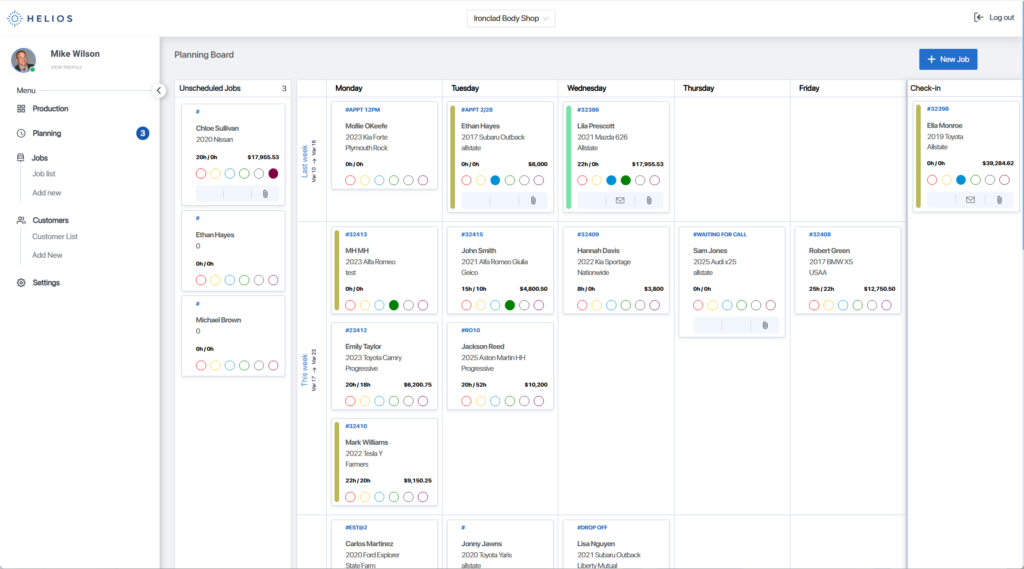
📊 Real-Time Dashboards Will Be the New Standard
- ✅ Instant job status updates
- ✅ Less time wasted chasing techs for progress
- ✅ More accurate delivery timelines
Forget whiteboards. A real-time dashboard like Helios puts every job, bay, and bottleneck right in front of you—updated live, wherever you are.
2. Mobile-First Management Tools Will Dominate
Why It Matters
Whether you’re walking the floor or running errands across town, you should be able to manage your shop from your phone.
In 2025, mobile-first auto shop software will no longer be optional. Techs expect to update job cards from their tablet. Owners want alerts on the go.
Real-World Impact
Helios users report a 25–40% drop in planning time just by allowing techs and service writers to access live updates on mobile.
Key Features to Look For:
-
In-shop tablet mode
-
Mobile job updates
-
Photo upload from phone
-
Responsive dashboards that work on all screen sizes
📱 Mobile-First Management Tools Will Dominate
- 📲 In-shop tablet mode
- 📲 Real-time job updates on phones
- 📲 Photo upload from mobile devices
Helios users are already seeing planning time drop by up to 40%—thanks to mobile-friendly dashboards and instant access on the go.
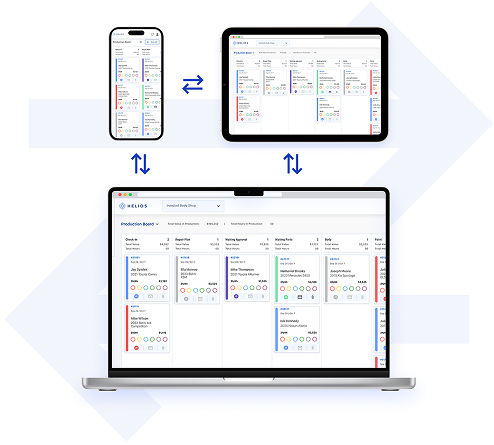
3. Cloud-Based Platforms Will Replace Local Servers
Why It Matters
Still backing up your shop software to a USB stick? That’s a risk no growing business should take.
By 2025, cloud-based shop platforms will have replaced local servers in most forward-thinking shops. Why? Because they’re easier to maintain, more secure, and accessible anywhere.
Benefits of Going Cloud:
-
Automatic backups
-
Access from any device, anywhere
-
Zero IT infrastructure required
-
Easy to scale across multiple locations
Bonus Tip: Avoid software that requires in-shop installation or manual updates—it won’t keep up with your growth.
☁️ Cloud-Based Platforms Will Replace Local Servers
- 🔒 Automatic backups & secure access
- 🌍 Access from any device, anywhere
- 🧩 Zero IT headaches—no server maintenance
Helios gives you a cloud-native platform that grows with your business—without the tech baggage.
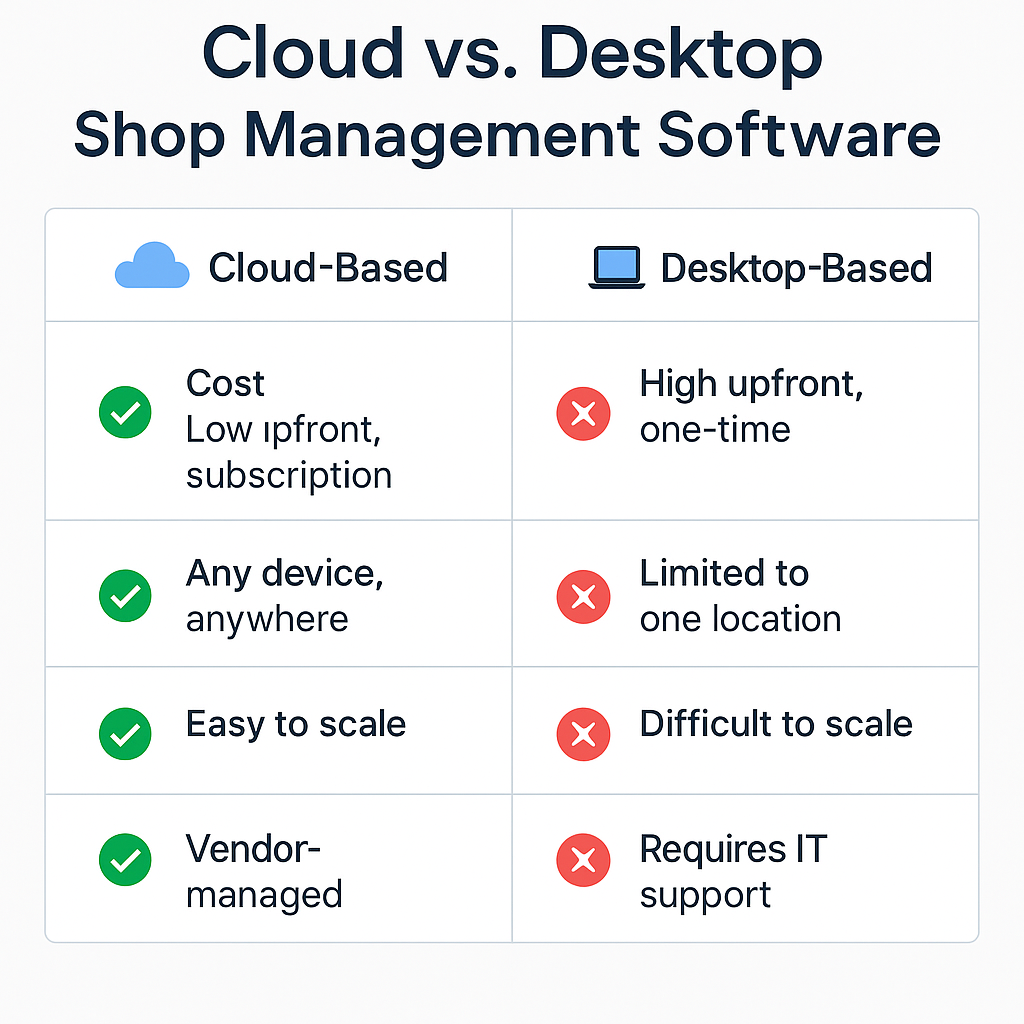
4. AI-Driven Scheduling & Workflow Automation
Why It Matters
Manual scheduling wastes time and is often based on guesswork. In 2025, AI will do more than just suggest—you’ll see tools automatically assign jobs, balance workloads, and flag conflicts in advance.
What’s Already Happening
Helios uses smart planning boards that can:
-
Recommend tech assignments based on skills and availability
-
Alert managers to potential job delays
-
Auto-update job cards when stages are complete
Why Shops Love It:
-
Reduces human error
-
Cuts daily planning meetings by 50%
-
Increases shop throughput with less chaos
🤖 AI-Driven Scheduling & Workflow Automation
- 📌 Auto-assign jobs based on availability
- 📌 Predict delays & alert managers
- 📌 Auto-update job cards as work progresses
Shops using Helios AI tools cut planning meetings by 50% and boost throughput—with less chaos.
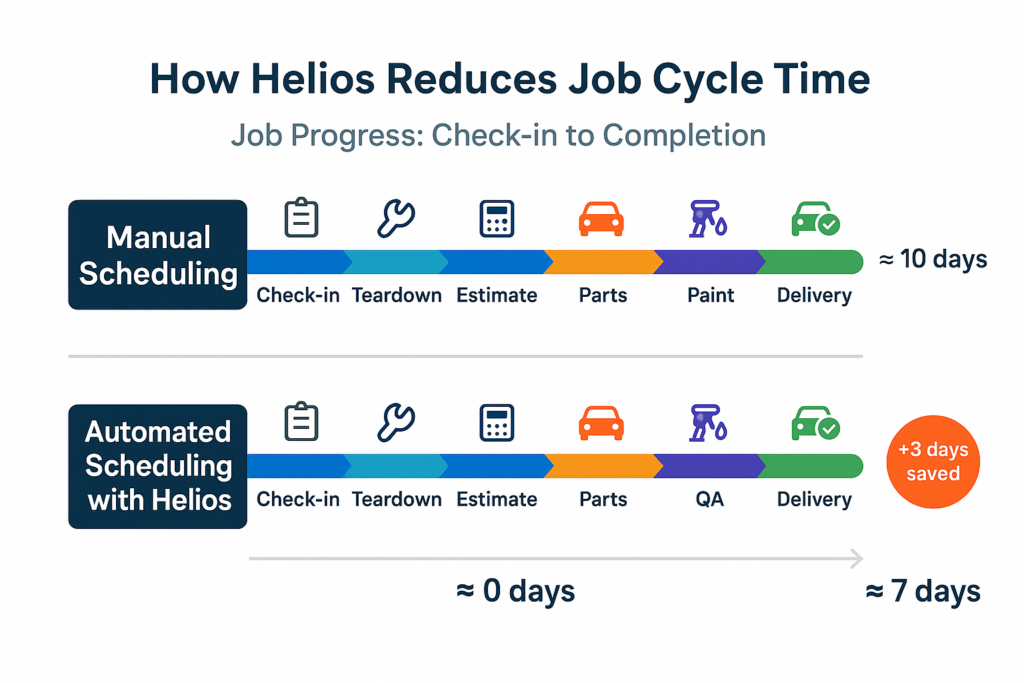
5. Data-Backed Decisions Will Separate Leaders
Why It Matters
You can’t grow what you can’t measure. In 2025, shop success will hinge on how well you leverage your key performance indicators (KPIs).
What to Track:
-
Paint & frame hours
-
Tech efficiency (hours billed vs. worked)
-
Cycle time per job type
-
Total value in production
-
Missed deadlines or callbacks
Actionable Insight
Helios lets you track and filter these metrics by date, team, or location—making it easy to identify trends and optimize operations.
📈 Data-Backed Decisions Will Separate Leaders
- 📊 Track paint, frame hours, and cycle times
- 📊 Monitor job volume and team efficiency
- 📊 Identify missed deadlines and spot trends
With Helios, your KPIs aren’t buried—they’re at your fingertips, making growth decisions obvious and actionable.
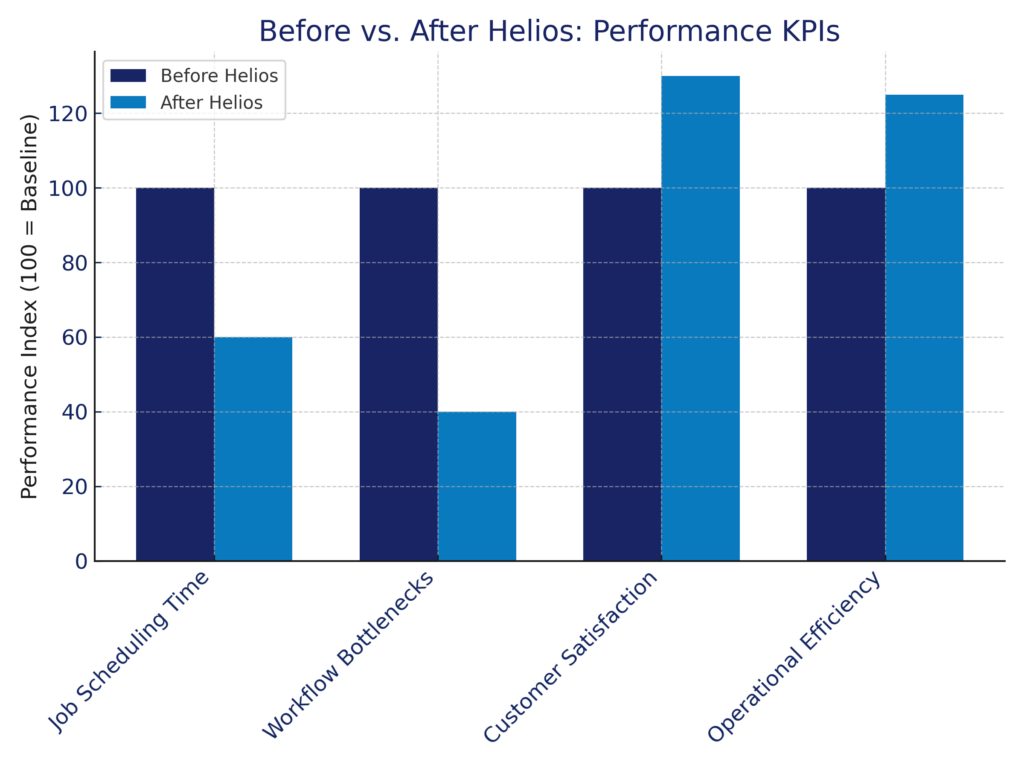
Conclusion
2025 isn’t “the future” anymore—it’s here. Shops that embrace these five trends will run smoother, serve more customers, and see higher profits. Those that don’t? They’ll struggle to keep up.
So ask yourself:
Is your shop ready for 2025?
If not, we’re here to help.
Book your free demo of Helios and see how we help modern auto shops stay ahead—one real-time update at a time.
❓ Frequently Asked Questions
Q: What’s the biggest tech shift for auto shops in 2025?
A: Cloud-based, mobile-first systems are replacing whiteboards and local servers—giving shops real-time visibility and flexibility from anywhere.
Q: Is mobile shop software really necessary?
A: Absolutely. Techs and managers need to access and update job info without being tied to a desk. Mobile software is now an industry standard.
Q: How can AI help in an auto shop?
A: AI streamlines scheduling, assigns jobs based on availability, flags bottlenecks, and automates updates—saving time and reducing errors.
Q: What KPIs should a modern shop track?
A: Paint hours, frame hours, tech efficiency, cycle time, job status, and callbacks are key metrics for operational performance.
Q: Why are shops moving away from desktop software?
A: Cloud platforms are easier to scale, more secure, and accessible on any device—without the maintenance and cost of local servers.

